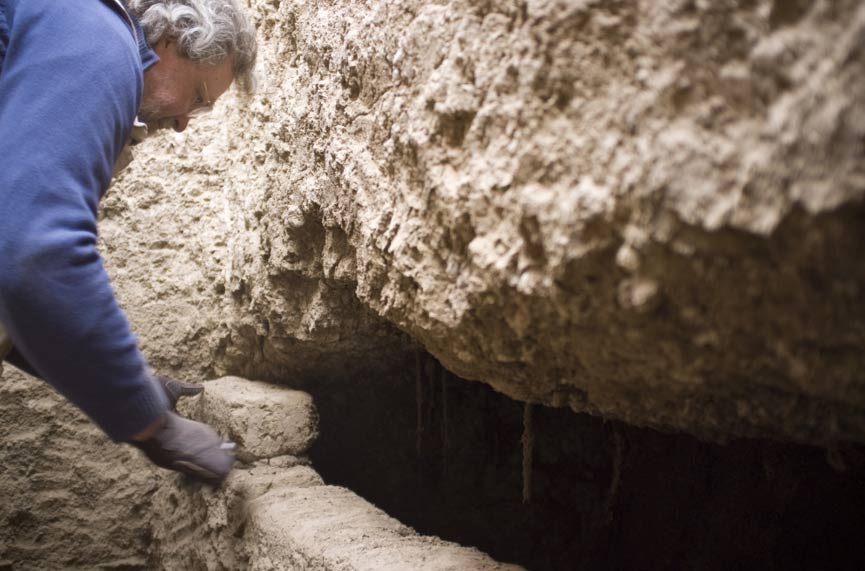Ancient Tomb Reveals Cultural Entanglement between Egypt and Nubia
At some point around 1500 BC, Egypt conquered Upper Nubia, and each kingdom took on cultural aspects of the other. Clear evidence of this cultural mixing is seen in the recently discovered grave of two women buried in Nubian style but with Egyptian amulets meant to protect her in the afterlife.
Stuart Tyson Smith, a University of California Santa Barbara professor of anthropology says the women’s burial shows “cultural entanglement.” A press release from the university calls this “the process by which colonizing powers and indigenous people influence one another and change over time.”
Professor Smith and Michele Buzon of Purdue University wrote an article titled “Entanglement and the Formation of Ancient Nubian Napatan State”, accepted for publishing in the journal American Anthropologist, detailing their research into cultural identity and transformation in the cemeteries of the ancient village of Tombos in northern Sudan. Tombos was a colonial center after Egypt conquered Upper Nubia.
One woman whose burial showed evidence of both Egyptian and Nubian culture was exhumed in 2015. She was laid on a bed in a flexed position, which is Nubian style, but had around her neck amulets of the Egyptian household god Bes. Another woman, named Weret, had a typical Egyptian heart scarab. Her grave, excavated in 2016, showed she was of high status, the researchers said.

An Egyptian heart scarab, Walters Art Museum (public domain)
“You get this really interesting entangled culture blending different elements in really different ways, but also there seems to be a lot of individual choice involved,” Smith says in the news release. “It’s not just a matter of the two cultures mash up and then you get this new hybrid thing that’s consistent. There seems to be a lot of individual choice — whether or not you want a Nubian bed and/or an Egyptian coffin and/or to be wrapped like a mummy or whether or not you want an Egyptian-style amulet and/or Nubian ivory jewelry.”
Professor Buzon, who is an expert in bioarchaeology, is measuring facial and skull features to determine the biological relationships between Egyptians and Nubians buried at Tombos. The two professors are taking that evidence, plus grave contents and burial practices, to unravel the cultural entanglement that occurred after the Nubian conquest of Egypt and its 25 th Dynasty of 750 to 650 BC.

The remains of a pyramid at Tombos. Credit: University of California Santa Barbara.
“Indeed, the shift was so complete the Nubians presented themselves as more culturally authentic Egyptian than the rulers they overthrew,” the press release states.
“We’re looking at the social dynamic from which those Nubian pharaohs emerged and how that blended culture might have contributed to the cultural dynamic that allowed the pharaohs to come in, not just as conquerors, but as the legitimate restorers of the proper order of things in a decadent time. That’s exactly how they presented it,” Professor Smith said.
The two professors’ work seems to contradict some of the past theories of conquest dynamics. The conquering Egyptians did not simply impose their will, which Smith says is the old model. Rather their cultures and indeed their families became intertwined and gave rise to the Nubian pharaohs of the 25 th Dynasty (Napatan Dynasty) who said they were more Egyptian than the Egyptians they later conquered and ruled.

Nubian pharaohs of the 25 th Dynasty (public domain)
Ancient Origins published an article in October 2014 that explored the power struggles between Nubia, also called Kush and Upper Egypt. That article stated:
The fragmentation of Egypt’s kingship in the 8th century BC was an opportunity seized by the Kingdom of Kush in Nubia. Division and internal political instability in Lower Egypt allowed the Kushite king, Piye, to launch a successful campaign in about 727 BC, thus establishing the 25th Dynasty.
In spite of this initial victory, Kushite rule in Egypt would last for less than a century. This was due to the expansion of the Neo-Assyrian Empire in the Near East. Although the Kushites were initially on peaceful terms with Assyria, Egyptian support for an anti-Assyrian coalition in the Southern Levant at the end of the 8th century BC sparked hostilities. In 671 BC, Egypt was invaded by the Assyrians, and the Kushite Dynasty of Egypt came to an end in 654 BC. This was not the end of the Kingdom of Kush, however, as they continued to survive in Nubia.

Location of the Kingdom of Kush (public domain)
Roman writers later described a war between Kush and Rome in the 1 st century BC. Rome never conquered Kush, but its power declined and by the 4 th century AD raids from the south and east sapped Kushite power. The Ethiopian Kingdom of Axum later captured and burned the Kushite capital of Meroe, thus ending the extremely ancient Kingdom of Kush.
Professors Smith and Buzon are excavating graves from the New Kingdom of 1550 to 1070 BC and the Third Intermediate Period of 1070 to 615.
The Ancient Origins article of 2014 explores some of the history and dynamics of the interactions between Eygpt and Kush or Nubia.
Featured image: Professor Stuart Tyson Smith opens an intact tomb with the coffined, mummified burial of a woman inside. Her name was Weret and she was buried with a heart scarab, which the Egyptians believed help the deceased have a favorable outcome in the divine judgement. Credit: University of California Santa Barbara.
By Mark Miller




















Comments
The Nubians are still in West of Aswan, until today they still hold to their own languages, culture, and their own life style.
The Nubians used to live in the south between Egypt and Sudan but they had to move when the Egyptians built the High Dam in 1970.